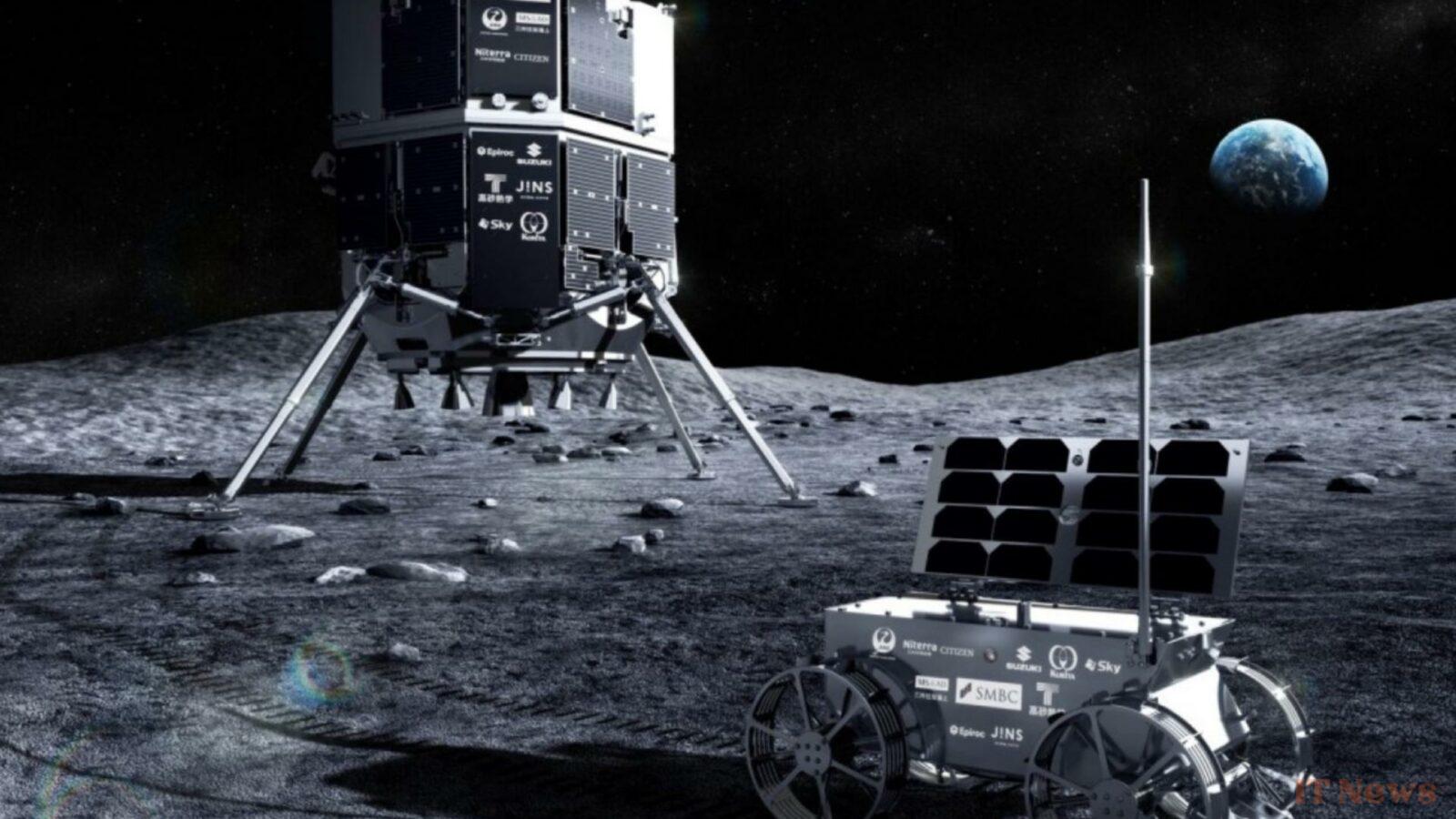ispace is now ready to set out again to conquer our satellite. Two years after the failed landing attempt of its Hakuto-R mission, the Japanese company will attempt to land its new rover Resilience on the visible side of the Moon tomorrow.
The vehicle took off on January 15th aboard a SpaceX Falcon 9 rocket, accompanied by Firefly Aerospace's Blue Ghost. The latter successfully landed on March 2nd, and the Japanese rover will therefore be keen to imitate it. On the evening of June 5, it will leave the lunar orbit in which it has been parked since May 7, with the aim of landing on the surface around 9:25 p.m. French time.
Four scientific experiments... and a Gundam plaque
Resilience is directly based on the Hakuto-R platform, which gave its name to the April 2023 mission. It is a prism-shaped vehicle approximately 2.3 meters high and 2.6 meters wide, equipped with five payloads, four of which are scientific.
The first is Tenacious, a plastic and carbon fiber micro-rover the size of a shoebox developed by the Luxembourg branch of ispace. It will be tasked with exploring the site in search of potentially exploitable resources. To do this, engineers have equipped it with a front-facing camera and a sort of small shovel that will allow it to take samples.
Resilience also includes an experimental electrolyzer. It will test a water electrolysis process to produce hydrogen and oxygen, two resources that will be valuable for the logistics of future lunar bases.
The third element is a module designed to test the cultivation of algae in a lunar environment. The results of this experiment will help determine whether it could be a viable source of food, and possibly oxygen, for astronauts.
The final scientific payload is an instrument called DSRP, for Deep Space Radiation Probe. As its name suggests, it is designed to measure radiation levels in its immediate environment. This will allow researchers to determine the nature, intensity, and, by extension, the danger of the ionizing radiation to which the astronauts will be exposed.
The final piece of kit, however, isn't an experiment. It's a commemorative metal plaque designed by Bandai Namco's research institute. Its design is based on the Charter of the Universal Century, a fictional document from the Gundam franchise.
Is it the right one this time?
With this new device, ispace hopes to turn the page on its Hakuto-R lander, which crashed with a crash into the surface of the Moon in April 2023. Data analysis revealed that the accident was linked to the failure of an altitude sensor, confused by the edge of a crater. Because of this relief, it misjudged its altitude relative to the surface, preventing the control system from adjusting the descent trajectory.
Hakuto-R: Japan missed its big date with the Moon
This failure was a double blow for ispace: in addition to losing its protégé, it also missed the opportunity to become the very first private company to land one of its devices on the surface of our satellite. It was ultimately the Blue Ghost, the Firefly aircraft with which Resilience took off in January, which was awarded this distinguished honor.
Blue Ghost has landed on the Moon: Why it's historic
But that hasn't stopped Japanese engineers from moving forward. "Since then, we've drawn inspiration from this experience and used it as motivation to move forward with determination," said Takeshi Hakamada, ispace's founder and CEO, in a statement. "We are now at the dawn of our new attempt to make history."
All that's left is to keep our fingers crossed that the Japanese contingent's efforts will finally be rewarded. Tune in tomorrow evening on the company's YouTube channel to follow this critical milestone in the mission.



0 Comments